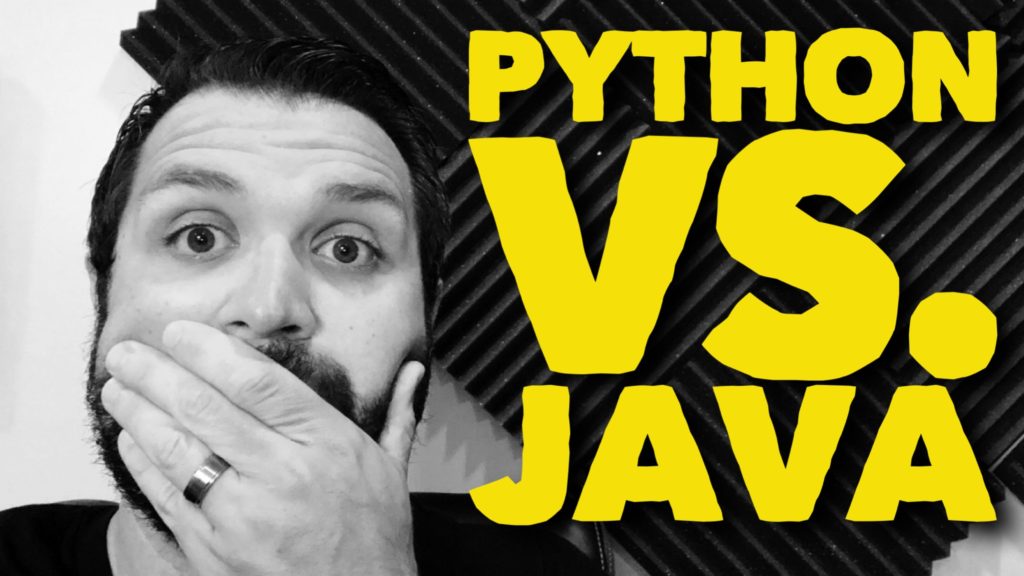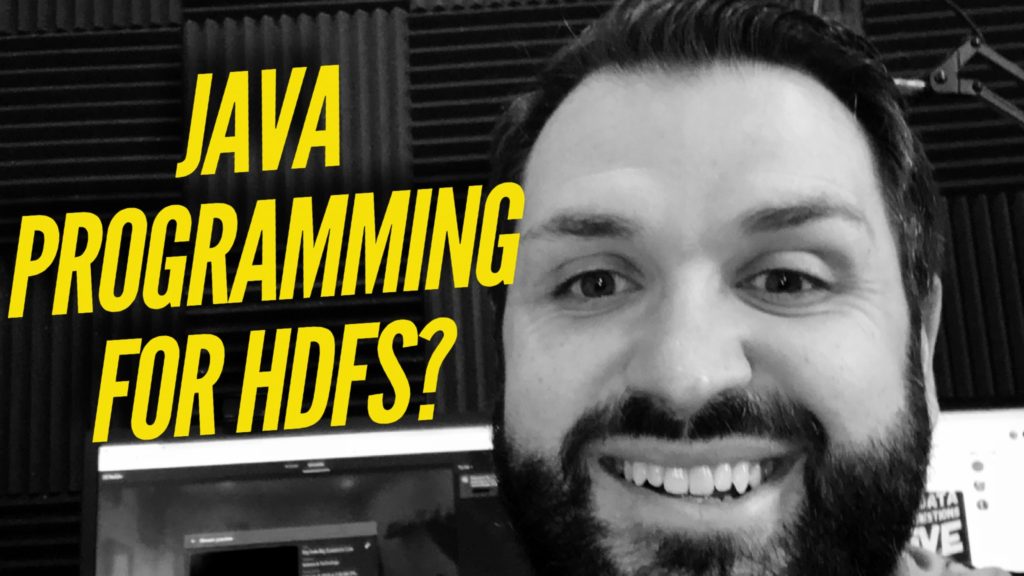What About Java in Deep Learning?
Years ago when I left Java in the rear view of my career, I never imagined someone would ask me if they could use Java over Python. Just kidding Java you know it’s only a joke and you will always have a special place in my heart. A place in my heart that probably won’t run because I have the wrong version of the JDK installed.
Python is king of the Machine Learning (ML) and Deep Learning (DL) workflow. Most of the popular ML libraries are in Python but are there Java offerings? How about in Deep Learning can you use Java? The answer is yes you can! Find the differences between Machine Learning and Deep Learning libraries in Java and Python in the video.
Transcript
Hi, folks. Thomas Henson here, with thomashenson.com, and today is another episode of Big Data Big Questions. Today’s question comes in around deep learning frameworks in Java, not Python. So, find out about how you can use Java instead of Python for deep learning frameworks. We’ve talked about it here on this channel, around using neural networks and being able to train models, but let’s find out what we can do with Java in deep learning.
Today’s episode comes in and we’re talking about deep learning frameworks that use Java, not Python. So, today the question is, “Are there specific deep learning frameworks that use Java, not Python?” First off, let’s talk a little bit about deep learning, do a recap. Deep learning, if you remember, is the use of neural networks whenever we’re trying to solve a problem. We see it a lot in multimedia, right, like, we see image detection. Does this image contain a cat or not contain a cat?
The deep learning approach is to take those images [Inaudible 00:01:10] you know, if we’re talking about supervised, so take those labeled images, so of a cat, not of a cat, feed those into your neural network, and let it decide what those features are. At the end you get a model that’s going to tell you, is this a cat or is this not a cat? Within some confidence. Hopefully not 50%, maybe closer to 99 or 97. But, that’s the deep learning approach versus the machine learning approach that we’ve seen a good bit.
We talk about Hadoop and traditional analytics from that perspective is in machine learning we’re probably going to use some kind of algorithm like singular value decomposition, or PCI, and we’re going to take these images and we’re going to look at each one and we’re going to define each feature, from the cat’s ears to the cat’s nose, and we’re going to feed that through the model and it’s going to give us some kind of confidence. While the deep learning approach we get to use a neural network, it defines some of those features, helps us out a lot. It’s not magic, but it is a little bit, so really, really innovative approach.
So, the popular languages, and what we’ve talked most about on this channel and probably other channels and most of the examples you’ve seen are all around Python, right? I did do a video before where I was wrong on C++. There was more C++ in deep learning than I really originally thought. You can check that video out, where we kind of go through and talk about that and I come in and say, “Hey, sorry. I missed the boat on that one.” But, the most popular language, one… I mean, I did a Pluralsight video on it, Take CTRL of Your Career, around TensorFlow and using TFLearn. TensorFlow is probably far and away the most popular one. You’ve seen it with stats that are out there. Also PyTorch, Caffe2, MXNet, and then some other, higher-level languages where Keras is able to use some of TensorFlow and be a higher-level abstraction, but most of those are going to use Python and then some of them have C++. Most examples that you’re going to see out there, just from my experience and just working in the community, is Python. Most people are looking for those Python examples.
But, on this channel, we’ve talked a lot about options and Hadoop for non-Java developers, but this is an opportunity where all you Java developers out there, you’re looking for, “Hey, we want to get into the deep learning framework. We don’t want to have to code everything ourselves. Are there some things that we can attach onto?” And the answer is yes, there are. It’s not as popular as Python right now, or R and C++ in the deep learning frameworks, but there is a framework called Deeplearning4j that is a Java-based framework. The Java-based framework is going to allow for you to use Java. You could still use Python, though. Even with the framework, you can abstract away and do Python, but if you’re specifically a Java developer and looking to… I mean, maybe you want to get in and contribute to the Deeplearning4j community and be able to take it from that perspective, or you’re just wanting to be able to implement it in some projects. Maybe you’re like, “Hey, you know what? I’m a Java developer. I want to continue doing Java.” Java’s been around since ’95, right? So, you want to jump into that? Then Deeplearning4j is the one for you.
So, really, maybe think about why would you want to use a Java-based deep learning framework, for people that maybe aren’t familiar with Java or don’t have it. One of the things is it claims to be a little bit more efficient, so it’s going to be more efficient than using an abstraction layer from that perspective in Python. But also, there’s a ton of Java developers out there, you know, there’s a community. Talked about how it’s been around since ’95, so there’s an opportunity out there to tap into a lot of developers that have the skills to be able to use it and so, there’s a growing need, right? There’s communities all around the globe and different little subsets and little subareas. Java’s one of those.
I mean, if you look at what we did from a Hadoop perspective, so many people that were Java developers moved to that community, also a lot of people that didn’t really do Java. It’s a lot like, like I said, at the point I was at in my career, I was more of a .NET C# developer. Fast forward to getting into the Hadoop community, went back to my roots as a Java, so I’d done some Java in the past, and went through that phase. And so, for somebody like me, maybe I would want to go back out. I don’t know. I’ve kind of gone through more Python, but a lot of different options out there. Just being able to give Java developers a platform to be able to get involved in deep learning, like, deep learning is very popular.
So, those are some of the reasons that you might want to go, but the question is, when you think about it, so if I’m not a Java developer, or what would you recommend? Would you recommend maybe not learn TensorFlow and go into Deeplearning4j? You know, I think that one’s going to depend… I mean, we say it a lot in here. It’s going to depend on what you’re using in your organization and what your skill set is. If you’re mostly a Python person, my recommendation would be continue on or jump into the TensorFlow area. But if you’re working on a project that is using Deeplearning4j then by all means go down that path and learn more about it. If you’re a Java developer and you want to get into it, you don’t want to transition skills or you’re just looking to be able to test something out and play with it, and you don’t want to have to write it in Python, you want to be able to do it in Java, yeah, use that.
These are all just tools. We’re not going to get transfixed on any tool. We’re not going to go all in and say, “You know what? I’m only going to be a Java developer,” or, “I’m only going to be this.” We’re going to be able to transition our skills and there’s always going to be options out there to do it. And in these frameworks too, right? Deeplearning4j is awesome, but maybe there’s another one that’s coming up that people would want to jump into, so like I said, don’t get so transfixed with certain frameworks. Like, Hadoop was awesome. We broke it apart. A lot of people navigated to Spark and still use HDFS as a base. There’s always kind of skills that you can go to, but if you go in and say, “Hey, I’m only going to ever do MapReduce and it’s always going to be in Java,” then you’re going to have some challenges throughout your career. That’s not just in data engineering, that’s throughout all IT. Heck, probably throughout all careers. Just be able to be flexible for it.
So, if you’re a Java developer, if you’re looking to test some things out, definitely jump into it. If you don’t have any Java skills and it’s not something that you’re particularly wanting to do, then I don’t recommend you running in and trying to learn Java just for this. If you’re doing Python, steady on with TensorFlow, or PyTorch, or Caffe, whatever you’re using.
So, until next time. See you again on Big Data Big Questions. Make sure you subscribe and ring that bell so you never miss an episode. If you have any questions, put them in the comment section here below. Thanks again.

